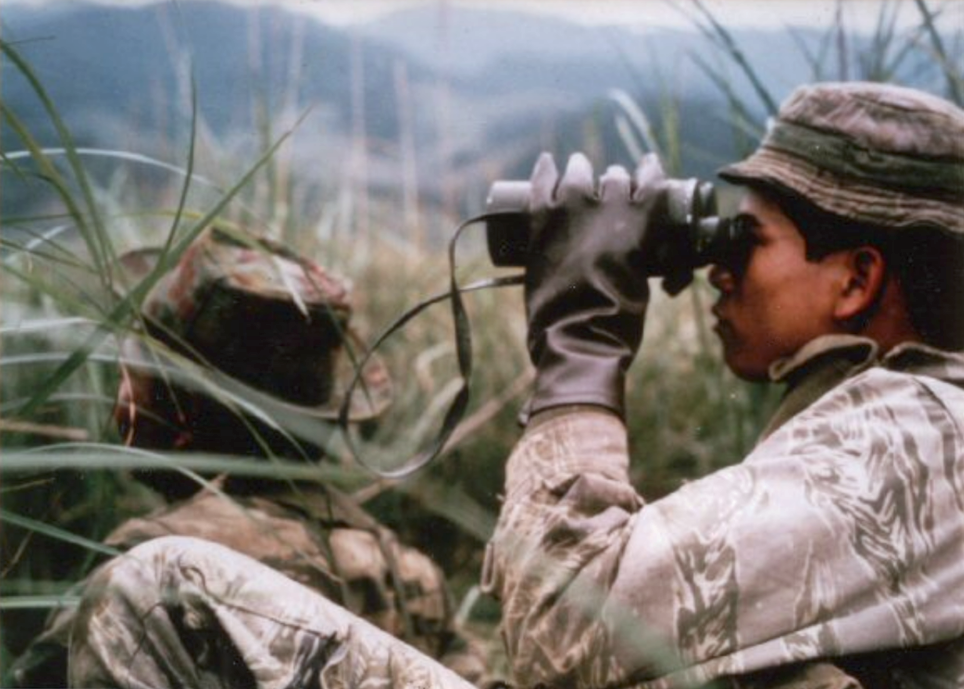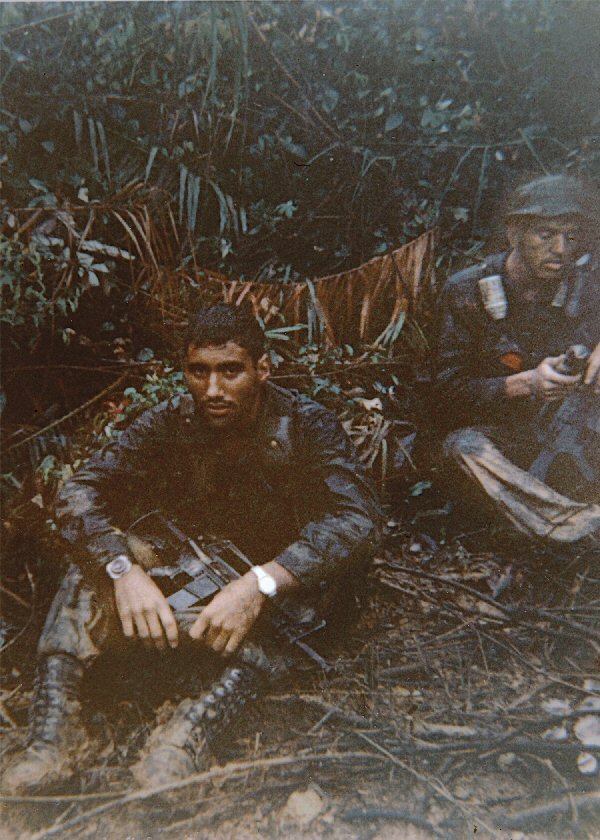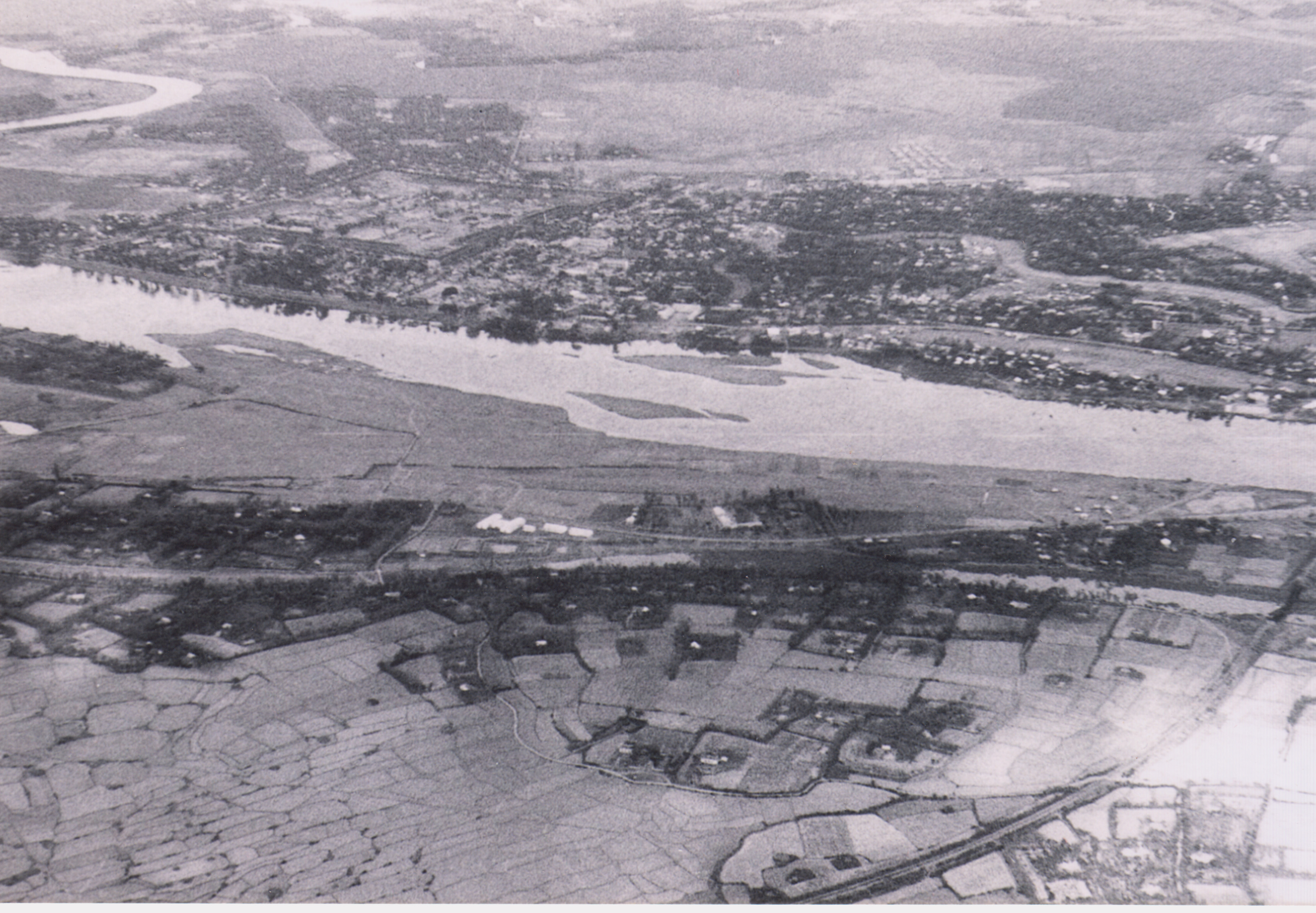|
Company E, 52nd Infantry (LRP) (United States)
Company E, 52nd Infantry, (LRP) was a 120 man-sized long-range reconnaissance patrol unit attached to the 1st Cavalry Division (Airmobile) in Vietnam in 1967-69. Its origin begins on January 1, 1967, as "LRRP Detachment G2," 1st Cavalry Division (Airmobile). It was then redesignated "Headquarters & Headquarters Company LRRP Detachment" in April 1967, and redesignated "Company E, 52nd Infantry (LRP)" on December 20, 1967.Ankony, Robert C., ''Lurps: A Ranger's Diary of Tet, Khe Sanh, A Shau, and Quang Tri,'' revised ed., Rowman & Littlefield Publishing Group, Lanham, MD (2009)/ref> Later, when all LRRP units were folded into the US Army Rangers on February 1, 1969, Company E was redesignated, "H Company, 75th Infantry (Ranger). History In November 1966 Captain James D. James, a Special Forces-trained officer, and Ranger Staff Sergeant Ronald Christopher, were selected to establish a long-range reconnaissance patrol detachment for the 1st Cavalry Division, designated "LRRP Detachmen ... [...More Info...] [...Related Items...] OR: [Wikipedia] [Google] [Baidu] |
Long-range Reconnaissance Patrol
A long-range reconnaissance patrol, or LRRP (pronounced "lurp"), is a small, well-armed reconnaissance team that patrols deep in enemy-held territory.Ankony, Robert C., ''Lurps: A Ranger's Diary of Tet, Khe Sanh, A Shau, and Quang Tri,'' revised ed., Rowman & Littlefield Publishing Group, Lanham, MD (2009)/ref> The concept of scouts dates back to the origins of warfare itself. However, in modern times these specialized units evolved from examples such as Rogers' Rangers in colonial British America, the Lovat Scouts in World War One, the Long Range Desert Group and the Special Air Service in the Western Desert Campaign and North West Europe, similar units such as Force 136 in East Asia, and the special Sissi (Finnish light infantry), Finnish light infantry units during the Second World War. Postwar, the role was carried in various North Atlantic Treaty Organization (NATO) and British Commonwealth countries by units that could trace their origins to these wartime creations such a ... [...More Info...] [...Related Items...] OR: [Wikipedia] [Google] [Baidu] |
Vietnamese Demilitarized Zone
The Vietnamese Demilitarized Zone was a demilitarized zone established as a dividing line between North and South Vietnam from July 1954 to 1976 as a result of the First Indochina War. During the Vietnam War (1955-1975) it became important as the battleground demarcation separating North from South Vietnamese territories. The zone ceased to exist with the reunification of Vietnam on July 2, 1976, though the area remains dangerous due to the numerous undetonated explosives it contains. Geography The border between North and South Vietnam was in length and ran from east to west near the middle of present-day Vietnam within Quảng Trị Province. Beginning in the west at the tripoint with Laos, it ran east in a straight line until reaching the village of Bo Ho Su on the Bến Hải River. The line then followed this river as it flowed in a broadly northeastwards direction out to the Gulf of Tonkin. Either side of the line was a Demilitarized Zone, forming a buffer of about i ... [...More Info...] [...Related Items...] OR: [Wikipedia] [Google] [Baidu] |
7th Cavalry Regiment
The 7th Cavalry Regiment is a United States Army cavalry regiment formed in 1866. Its official nickname is "Garryowen", after the Ireland, Irish air "Garryowen (air), Garryowen" that was adopted as its march tune. The regiment participated in some of the largest battles of the Indian Wars, including its famous defeat at the Battle of Little Bighorn, where its commander Lieutenant Colonel George A. Custer was killed. The regiment also committed the Wounded Knee Massacre, where more than 250 men, women and children of the Lakota people, Lakota were killed. The 7th Cavalry became part of the 1st Cavalry Division (United States), 1st Cavalry Division in the 1920s, it went on to fight in the Pacific War, Pacific Theater of World War II and took part in the Admiralty Islands campaign, Admiralty Islands, Battle of Leyte, Leyte and Battle of Luzon, Luzon campaigns. It later participated several key battles of the Korean War. During the Korean War the unit committed the No Gun Ri massa ... [...More Info...] [...Related Items...] OR: [Wikipedia] [Google] [Baidu] |
National Route 9 (Vietnam)
National Route 9 ( vi, Quốc lộ 9 (or abbrv. QL9) or Đường 9, links=no) runs across Vietnam roughly in line with the 17th Parallel. The route includes two segments. The segment called National Route 9A begins at Đông Hà and ends at Lao Bảo on the Vietnam-Laos border and is entirely within Quảng Trị Province. The 8 km-long segment called National Route 9B begins at Dong Ha and runs eastward to Cửa Việt Port. Road layout Route 9 runs through the following towns and cities of Quảng Trị Province: *Đông Hà, where it connects with Route 1 *Cam Lộ * Ca Lu * Tân Hợp, where it connects to the Ho Chi Minh Highway *Khe Sanh *Lang Vei *Lao Bảo where it connects to Route 9E in Laos which runs through Xépôn and Seno to Savannakhet Specifications *Total length: 82 km *Road width: 10 m *Road surface: paved with asphalt History Route Coloniale 9 or RC9 was constructed by the French in the early 20th century. With the partition of Vietnam followi ... [...More Info...] [...Related Items...] OR: [Wikipedia] [Google] [Baidu] |
Ca Lu Combat Base
Ca Lu Combat Base (Vietnamese: ''Cà Lu'') was an Army of the Republic of Vietnam (ARVN) and United States Marine Corps base located on Highway or Route 9, near Krông Klang, Đa Krông District, western Quảng Trị Province, South Vietnam. The base was originally established by the ARVN to cover the infiltration route across the Vietnamese Demilitarized Zone (DMZ) through the Cam Lo river valley. The base was taken over by the 3rd Marine Division during Operation Virginia in April 1966 by the 4th Marine Regiment, with three 105mm howitzers, a command group and a security force were positioned there. By February 1967, six 105mm howitzers operated by the 12th Marine Regiment were located at Ca Lu, with companies from the 3rd Battalion, 3rd Marines providing security. From August 1967 the North Vietnamese People's Army of Vietnam (PAVN) cut Route 9 between Ca Lu and Khe Sanh Combat Base. In late 1967 work began on expanding Ca Lu into a combat operating base and by Decemb ... [...More Info...] [...Related Items...] OR: [Wikipedia] [Google] [Baidu] |
Operation Pegasus (1968)
The Battle of Khe Sanh (21 January – 9 July 1968) was conducted in the Khe Sanh area of northwestern Quảng Trị Province, Republic of Vietnam (South Vietnam), during the Vietnam War. The main US forces defending Khe Sanh Combat Base (KSCB) were two regiments of the United States Marine Corps supported by elements from the United States Army and the United States Air Force (USAF), as well as a small number of Army of the Republic of Vietnam (ARVN) troops. These were pitted against two to three divisional-size elements of the North Vietnamese People's Army of Vietnam (PAVN). The US command in Saigon initially believed that combat operations around KSCB during 1967 were part of a series of minor PAVN offensives in the border regions. That appraisal was later altered when the PAVN was found to be moving major forces into the area. In response, US forces were built up before the PAVN isolated the Marine base. Once the base came under siege, a series of actions were fought over ... [...More Info...] [...Related Items...] OR: [Wikipedia] [Google] [Baidu] |
Vandegrift Combat Base
Vandegrift Combat Base (also known as FSB Vandegrift and LZ Stud) is a former U.S. Army, U.S. Marine Corps, and Army of the Republic of Vietnam (ARVN) base north of Ca Lu in Quảng Trị Province, Vietnam. History 1968 LZ Stud was originally established by the 1st Cavalry Division on Route 9 in early 1968 to support Operation Pegasus, the relief of Khe Sanh. On 14 March engineer construction began on a x airstrip and a logistical complex at LZ Stud. On 24 March the quartering party moved to LZ Stud and began work on command and communications bunkers. By 29 March the strip was opened for C-7 Caribou aircraft. On 30 March the 11th Aviation Group moved to LZ Stud. The base was later occupied by the 9th Marine Regiment, part of the 3rd Marine Division who renamed it Vandegrift Combat Base after Marine General Alexander Vandegrift. 1969 From January–March 1969 Vandegrift was used to support Operation Dewey Canyon, an offensive into the A Shau Valley south of the base. On ... [...More Info...] [...Related Items...] OR: [Wikipedia] [Google] [Baidu] |
Operation Pegasus
Operation Pegasus was a military operation carried out on the Lower Rhine near the village of Renkum, close to Arnhem in the Netherlands. Overnight on 22–23 October 1944, the Allied military forces, MI9, the British intelligence organization, and the Dutch Resistance evacuated 138 men, mostly soldiers trapped in German-occupied territory who had been in hiding since the Battle of Arnhem a month earlier. The fighting north of the Rhine in September had forced the 1st British Airborne division to withdraw, leaving several thousand men behind. Several hundred of these were able to evade capture and go into hiding with the assistance of the Dutch Resistance. Initially the men hoped to be able to wait for the British 2nd Army to resume its advance and thus rescue them, but when it became clear that the Allies would not cross the Rhine that year the men decided to escape back to Allied territory. The first escape operation (Pegasus I) was a success, but a second operation (Pegasus ... [...More Info...] [...Related Items...] OR: [Wikipedia] [Google] [Baidu] |
1st Division (South Vietnam)
The 1st Division of the Army of the Republic of Vietnam (ARVN)—the army of the nation state of South Vietnam that existed from 1955 to 1975—was part of the I Corps that oversaw the northernmost region of South Vietnam, the centre of Vietnam. The 1st Division was based in Huế, the old imperial city and one of two major cities in the region, which was also the corps headquarters. Until late 1971 the division was also tasked with the defence of Quảng Trị, the closest town to the Vietnamese Demilitarized Zone (DMZ) and among the first to be hit by the Tet Offensive. History In 1960 the 1st Field Division was redesignated the 1st Infantry Division. In late 1965 Maj. Gen. Lewis William Walt, the commander of the US III Marine Amphibious Force and the I Corps' senior adviser, assessed the division under General Nguyễn Văn Chuân as "waging a skillful campaign" and "consistently destroying the VC in all significant encounters." On 12 March 1966 following the dism ... [...More Info...] [...Related Items...] OR: [Wikipedia] [Google] [Baidu] |
Army Of The Republic Of Vietnam
The Army of the Republic of Vietnam (ARVN; ; french: Armée de la république du Viêt Nam) composed the ground forces of the Republic of Vietnam Military Forces, South Vietnamese military from its inception in 1955 to the Fall of Saigon in April 1975. It is estimated to have suffered 1,394,000 casualties (killed and wounded) during the Vietnam War. The ARVN began as a postcolonial army that was Military Assistance Advisory Group, trained by and closely affiliated with the United States and had engaged in conflict since its inception. Several changes occurred throughout its lifetime, initially from a 'blocking-force' to a more modern War in Vietnam (1959–63)#Republic of Vietnam strategy, conventional force using Air assault, helicopter deployment in combat. During the American intervention, the ARVN was reduced to playing a defensive role with an incomplete modernisation, and transformed again following Vietnamization, it was upgeared, expanded, and reconstructed to fulfill the ... [...More Info...] [...Related Items...] OR: [Wikipedia] [Google] [Baidu] |
Battle Of Quang Tri (1968)
The Battle for Quang Tri occurred in and around Quảng Trị City ( Quảng Trị Province), the northernmost provincial capital of South Vietnam during the Tet Offensive when the Vietcong (VC) and People's Army of Vietnam (PAVN) attacked Army of the Republic of Vietnam (ARVN) and American forces across major cities and towns in South Vietnam in an attempt to force the Saigon government to collapse. This included several attacks across northern I Corps, most importantly at Huế, Da Nang and Quảng Trị City. After being put on the defensive in the city of Quảng Trị, the Allied forces regrouped and forced the PAVN/VC out of the town after a day of fighting. Background In 1968, Quảng Trị City was a small market town and the capital of Quảng Trị Province, the northernmost province of South Vietnam, bordering North Vietnam to the north, and Laos to the west. Like the old imperial capital at Huế, Quảng Trị City is located on Route 1. It is about inland from t ... [...More Info...] [...Related Items...] OR: [Wikipedia] [Google] [Baidu] |
324th Division (Vietnam)
The 324th Division (named as 324B Division during Vietnam War) is an infantry division of the People's Army of Vietnam (PAVN) assigned to the 4th Military Region (Vietnam People's Army). First Indochina War Among the first divisions raised, the 324th Division participated in the Battle of Hòa Bình. Alongside the 320th Division and other units, this division had participated in laying ambushes on armoured and relief convoys intending to lift the siege of Dien Bien Phu alongside the battle itself. Vietnam War Starting in 1955, the 90th Regiment, 324th Division began operating in Cambodia and training cadres and battalions from ethnic Khmer and Central Highlands groups. These groups were to be trained as the nucleus for future revolutionary activities, in particular in securing the routes along the Ho Chi Minh Trail. In 1961, the Division was placed in Xépôn and along Route 9, on the Ho Chi Minh Trail. 1966-7 In response to increasing U.S. airstrikes, the Division wa ... [...More Info...] [...Related Items...] OR: [Wikipedia] [Google] [Baidu] |







